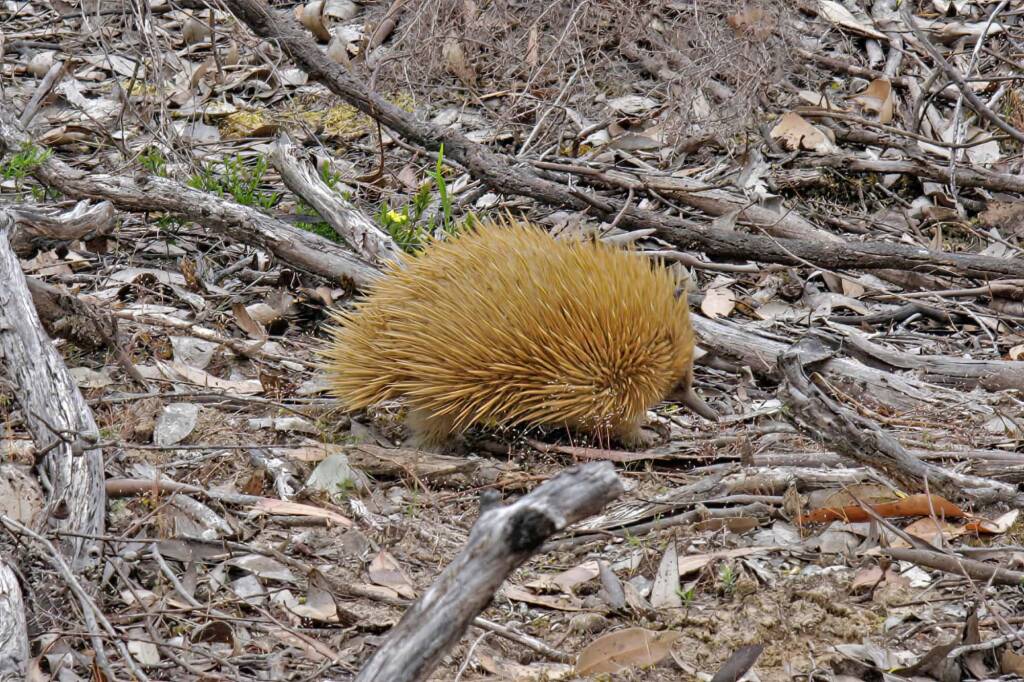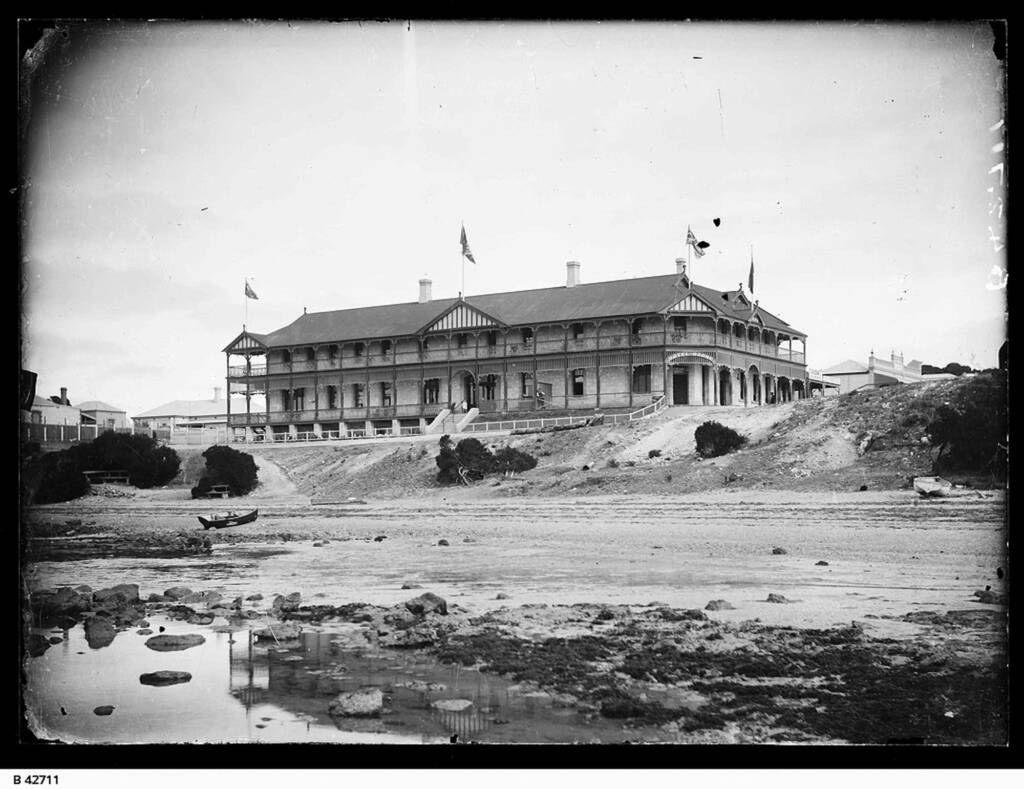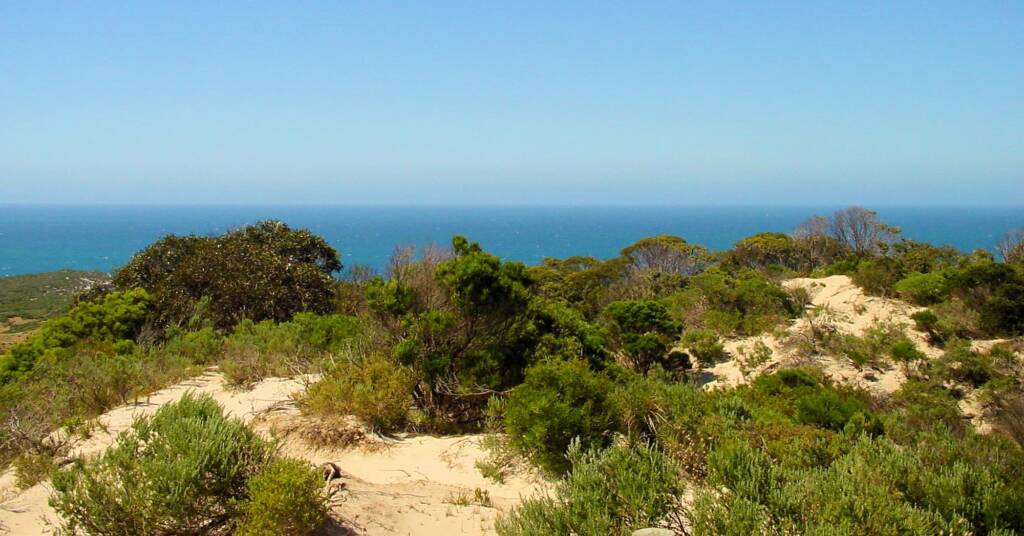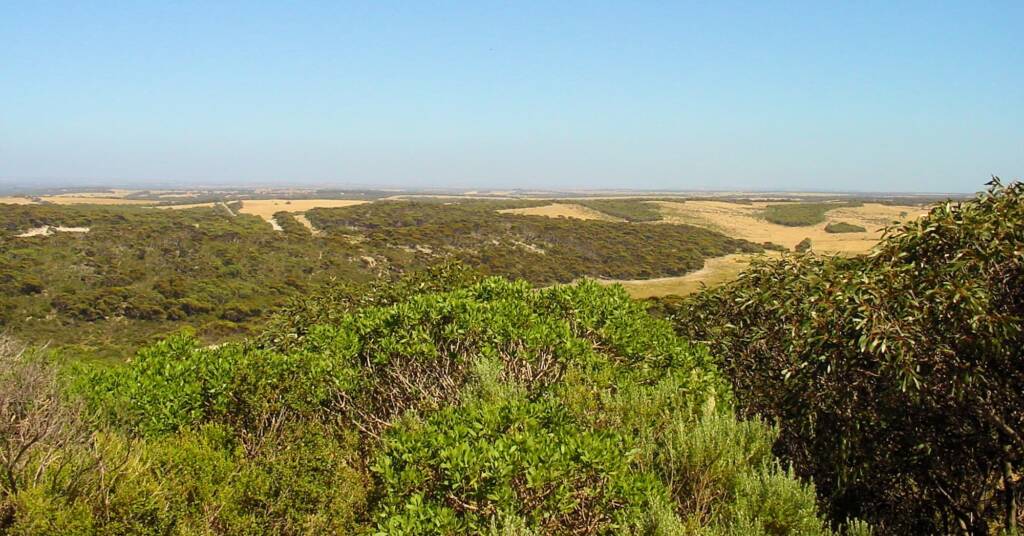Kangaroo IslandKangaroo Island Attractions Fauna Flora Remarkable Rocks
Kangaroo Island is surrounded by unspoilt beaches, with one third of the island conserved in 9 national parks, and teeming with wildlife, this unspoilt wilderness area is a must visit attraction. These include Baudin Conservation Park, Cape Borda Lightstation, Cape Gantheaume Conservation Park and Wilderness Protection Area, Cape Willoughby Conservation Park, Flinders Chase National Park and Ravine Des Casoars Wilderness Protection Area, Kelly Hill Conservation Park, Lashmar Conservation Park, Lathami Conservation Park and Seal Bay.1
September through October is an ideal period to enjoy the flowering flora with the wildlife. With over 250 recorded bird species, possums, platypus, koalas, wallabies, goanna, sea lion, fur seals, just to name a few, there is plenty of wildlife to see and enjoy.

Remember, to increase your chances of seeing the wildlife throughout the island, you should be aware that many of the mammals are nocturnal, that ‘wild animals’ frighten easily, and successfully viewing is usually from a distance, especially when you do not interrupt their natural behaviour.
After the bushfires in January 2020, parts of Kangaroo Island is still recovering from these fires, with restoration work still continuing. Contact the local visitor centre and check the Kangaroo Island Parks website for the current situation.
Suggested attractions include:

Kangaroo Island Attractions
- American River
This popular holiday destination is a small settlement named by the American sealers who settled there in the early 1800s. Today you can enjoy aquatic activities including swimming, fishing, boating and sailing.
- Cape Borda Lighthouse
When the French sailor Nicholas Baudin first sighted this rugged cliff top, he named it after the French mathematician Jean Charles de Borda. The Cape Borda lighthouse was built in 1858, 155 metres above the sea. There is a small graveyard nearby where 13 people are buried and there is also the Cape Borda Maritime Museum providing a detailed history of this lonely outpost.
- Emu Bay
Is a little settlement which was once the main port on the island’s north coast. All that is left now is a jetty which was built in 1916 to ship grain and timber.
- Flinders Chase National Park
A park that takes up most of the western half of the island, and is one of the largest national parks in South Australia. The parks main attractions include Remarkable Rocks, the Admirals Arch and the Cape Borda lighthouse. The formations like Remarkable Rocks and the Admirals Arch (both located at Cape du Couedic) highlight the unrelenting power of the winds and the oceans, as they have been and continue to be weathered into fantastic shapes by the sea. Admirals Arch being carved out of the rocks.
Bushwalkers, as they walk the trails through vegetation of gum forests to mallee scrubs, are also likely to find sea lions, New Zealand fur seals, kangaroos, wallabies, sea eagles, ospreys, Cape Barren geese, and black cockatoos.
- Hope Cottage Museum
Located on the hill above Kingscote and is part of a trio of cottages built in 1859, originally called Faith, Hope and Charity (Faith no longer in existence).
- Kelly Hills Conservation Park
Web: www.parks.sa.gov.au/parks/kelly-hill-conservation-park
Much of the infrastructure of the park was burnt in the January 2020 bushfire, but the toilets survived! Check the Kangaroo Island Parks website for the latest development.
This 6,306 ha conservation park is located between Seal Bay and Flinders Chase on the southern coast of the island. The park is named after a horse called Ned Kelly, which stumbled into the caves in the area. The landscape is dominated by mallee and coastal scrub and includes extensive walking trails. The Kelly Hill Caves are a popular highlight, check the park website to see if it is open and to book.
- Kingscote
A small settlement first settled in 1836, looking over the waters of the Bay of Shoals. Named Kingscote after Henry Kingscote, a director of the South Australian Company.
- Ligurian Bees
Also found on the island are the unique Ligurian Bees. Twelve hives of the Ligurian Bee was brought to the island in 1881, by August Fiebig, from the Italian Province of Liguria. He established an apiary near Penneshaw and since then no other breeds of bee have been introduced to Kangaroo Island. The present-day honey bees on the island are now all descendants of those twelve hives and unique in the world. Renown for their gentle nature and golden colour, the Ligurian Bees on Kangaroo Island are used for breeding and exported interstate and overseas. Take the time to taste some of the honey and many other local produce.
- Little Sahara
Can be difficult to locate, as it is not signposted from the road. Ask at the General Store at Vivonne Bay for directions. There is a rough unsealed track to a car park and beyond it the sand dunes, which are swept up by the winds from the Southern Ocean, rise dramatic formation.
- The Mulberry Tree
Governor Wallen Drive, Kingscote, Kangaroo Island
This large and historic mulberry tree was planted by some of the island’s earliest settlers. No one knows for sure who planted it and a sign indicates that there are no fewer than four families including the Powells, Christians, Kleemans and Baeres, who all believe that their forebear planted the tree.
- Ozone Hotel
Just up from the jetty, was opened in 1907 and enjoys great views across the ocean and the harbour. It burn down in 1918 and was rebuilt. The hotel looks very different today, having been brought by Aurora Hotel Group.

The most serious set-back that has ever befallen Kingscote occurred early on Tuesday morning when the grand and commodious Ozone Hotel was burnt to the ground. This building, which was generally recognised as one of the finest residential hotels in the State, comprised about 80 rooms, and its destruction will result in a serious loss to the Island.
Source: Disastrous Fire. Ozone Hotel Burnt. The Kangaroo Island Courier, Saturday, August 31, 1918

Source: Ozone Hotel, Kingscote – A resource in the @SLSA collections – https://collections.slsa.sa.gov.au/resource/B+42711
- Penneshaw
Only 16 km between Cape Jervis to Penneshaw, this small township on Backstairs Passage is the major entry point by ferry to the island. There is a local Folk Museum in the old school house that contains relics of the island’s maritime past.
- Pennington Bay
One of the many spectacular beaches on Kangaroo Island. Just a two-minute detour off the main road from Penneshaw to Kingscote, the bay has accessible vantage point for views of the south coast. The bay sits at the narrowest part of the island, with Pelican Lagoon just to the north and the township of American River. Pennington Bay provides dramatic shoreline views to the drama of the Southern Ocean and its craggy geology. To the west is the main beach with its long arc of dunes and surf, a favourite for surfing, fishing and long strolls. To the east, are the Pennington’s limestone bluffs that form a series of sheltered coves with sandy beaches and broad wave-cut platforms, perfect to explore at low tide with their rock pools and stretches of seagrass meadows.
- Prospect Hill Lookout
Access to the highest point on Kangaroo Island, is via the 500 steps that has been rebuilt on the steep sand hill. The lookout is on the narrowest part of Kangaroo Island. It was from here that Captain Matthew Flinders surveyed Kangaroo Island.
From here you have views across to American River, Pelican Lagoon, the Southern Ocean and Pennington Bay. The walk up is signage with information on the nature of the geology, and the flora and the fauna you can find in the area.
The walk up to the lookout is part of the Investigator Trail, that follows the steps of the explorer Matthew Flinders in 1802, from where he rowed to the end of Pelican Lagoon and walked up to the top of the large sand dune which he named Prospect Hill. The trail starts from a commemorative plaque in the roadside carpark on the northern side of Hog Bay Road.
After 3 years of being closed, the rebuilt Prospect Hill stairway and lookout were officially reopened on 23 September 23. Sometimes referred to as Mt Thisby (the name given to the large sand dune by Matthew Flinders in 1802), it has been reported that the name Mount Thisby or Tisby “was because a man of that name had a camp at the foot of the mountain, a well-known landmark to all visitors to American River.”
Whilst the accuracy of this story cannot be confirmed, he original Mount Thisby lookout was officially opened on November 16, 1990.
- Remarkable Rocks
These huge iconic sculpture granite rocks are a must see on Kangaroo Island. They offer the opportunity to learn about some of the geology of the region, and a chance for some stunning photographs — Remarkable Rocks are part of the Flinders Chase National Park.
- Seal Bay Conservation Park
A park covering 750 ha and includes both the Seal Bay area (where visitors can see seals lying on the beach, under supervision), and the Little Sahara set of sand dunes. These dunes lie between Seal Bay and Vivonne Bay.
- Stokes Bay
On the north of the island, is a great ‘hidden’ beach, accessible by following the signs from the car park. You wind through the rocks and around the headland, where you will emerge from this ‘secret tunnel’ to a natural swimming pool and a great beach from which to swim and surf.
- Vivonne Bay
With a General Store and a jetty, it boasts fantastic views across the bay. Nearby is the Vivonne Bay Wildlife Reserve, a privately run park with 40 km of walking trails.

Footnote & References
- Kangaroo Island, National Parks and Wildlife Services, South Australia, https://www.parks.sa.gov.au/parks/kangaroo-island
- National Parks and Wildlife Services, South Australia, https://www.parks.sa.gov.au/
- Investigator Trail, Kangaroo Island, WalkingSA, https://www.walkingsa.org.au/walk/find-a-place-to-walk/investigator-trail-kangaroo-island/
- Kangaroo Island Tourism Alliance, https://www.tourkangarooisland.com.au/
- Ozone Hotel, Kangaroo Island Pioneers Association, https://www.kipioneers.org/history/historic-images/ozone-hotel
Kangaroo IslandKangaroo Island Attractions Fauna Flora Remarkable Rocks
South AustraliaAdelaide Hills Alberrie Creek Algebuckina Bridge Belair National Park Kangaroo Island Kanku–Breakaways Conservation Park Mount Gambier Oodnadatta Oodnadatta Track Orroroo Port Augusta Port Germein Wabma Kadarbu Conservation Park William Creek Wilpena Pound Witjira National Park Woomera









